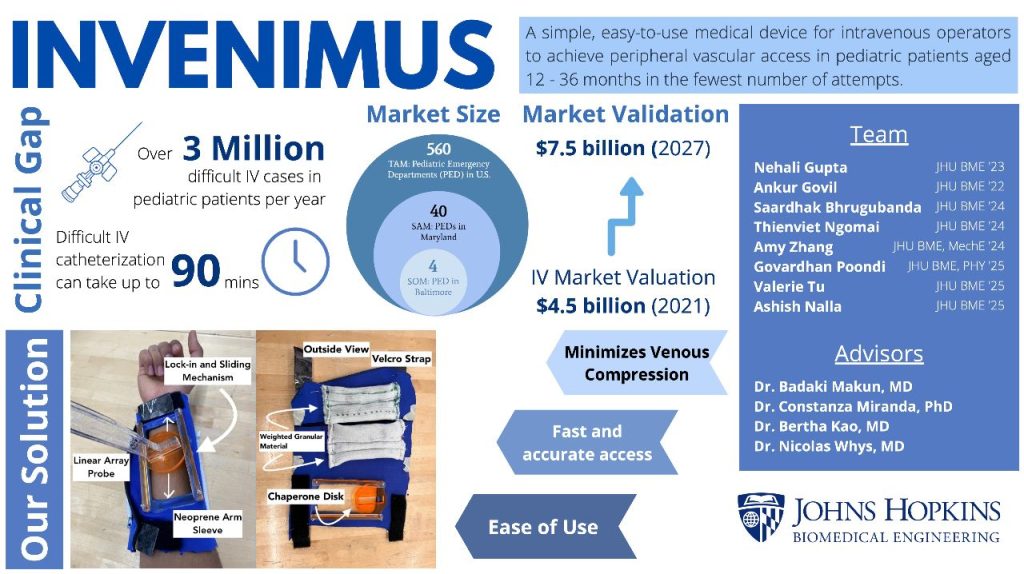InVenimus: Improving Intravenous Access in Pediatric Patients
Program:
Biomedical Engineering
Project Description:
Peripheral intravenous (PIV) lines deliver fluids and medication to the majority of patients admitted to emergency departments in the U.S. Although ultrasound guidance has reduced the challenges associated with PIV catheterization, these challenges persist in pediatric patients. Infants, particularly those aged 12-36 months, are challenging patients due to their high concentration of subcutaneous arm fat and small vein diameter when compared to healthy adults. New IV operators struggle with PIV catheterization in these patients due to poor vein visibility and current medical techniques that promote the use of a single hand when inserting the needle.
InVenimus offers an armband prototype that secures an ultrasound probe to a pediatric patient’s arm. This device allows the IV operator to use both hands when inserting the needle, increasing the success rate of PIV on the first attempt. By reducing the need for a second attempt, InVenimus aims to decrease the time between a pediatric patient’s arrival at the ER and vital stabilization.
This device successfully secures the ultrasound probe and maintains its orientation both rotationally and translationally. Moreover, it does not obstruct needle entry during PIV catheterization. Thus, the device is compatible with the chosen ultrasound technology and the PIV workflow. The InVenimus armband allows for faster administration of medication to pediatric patients, reducing the time ER staff spends serving a particular patient. This device also reduces the training threshold for new IV operators, allowing these individuals to feel more comfortable performing PIV catheterization on especially difficult anatomy.
Team Members
-
[foreach 357]
[if 397 not_equal=””][/if 397][395]
[/foreach 357]
Project Mentors, Sponsors, and Partners
Dr. Oluwakemi Badaki-Makun (Clinical Mentor)
Dr. Nicholas Wyhs (Committee Member)
Dr. Bertha Kao (Committee Member)
Course Faculty
-
[foreach 429]
[if 433 not_equal=””][/if 433][431]
[/foreach 429]
Project Links
Additional Project Information
Project Photo

Project Photo Caption:
To see the full poster, click the poster link at the end of the page


